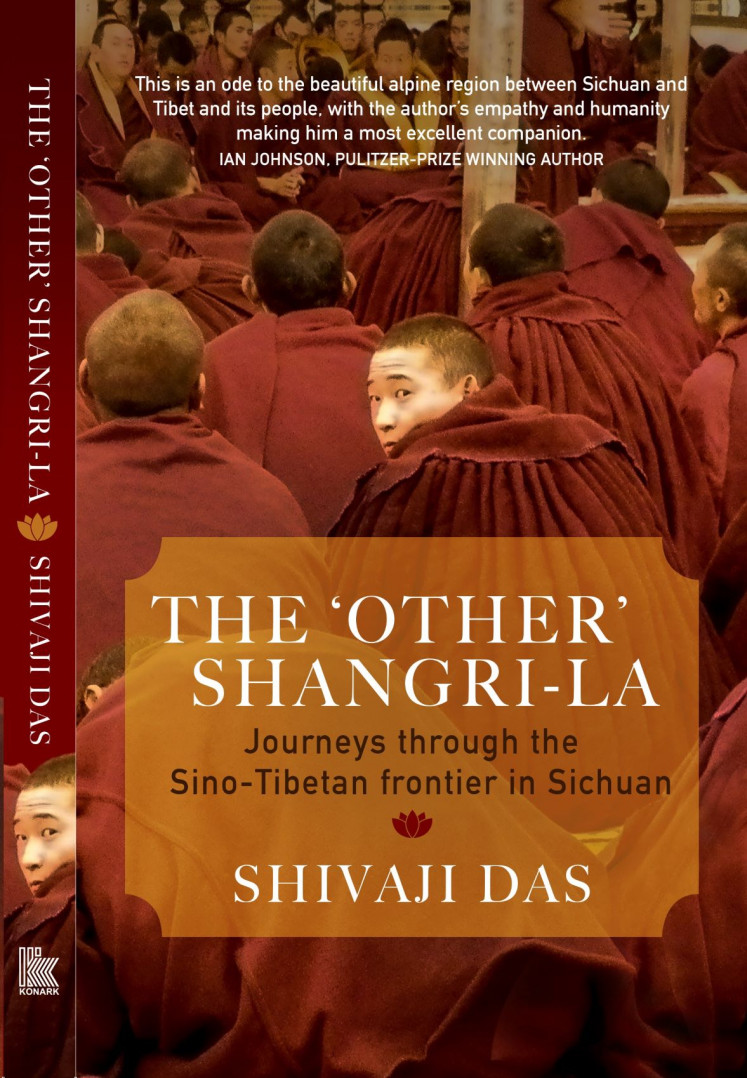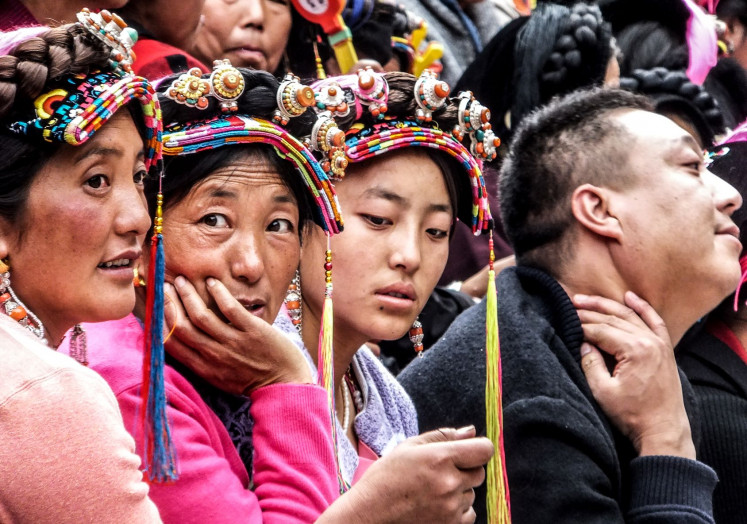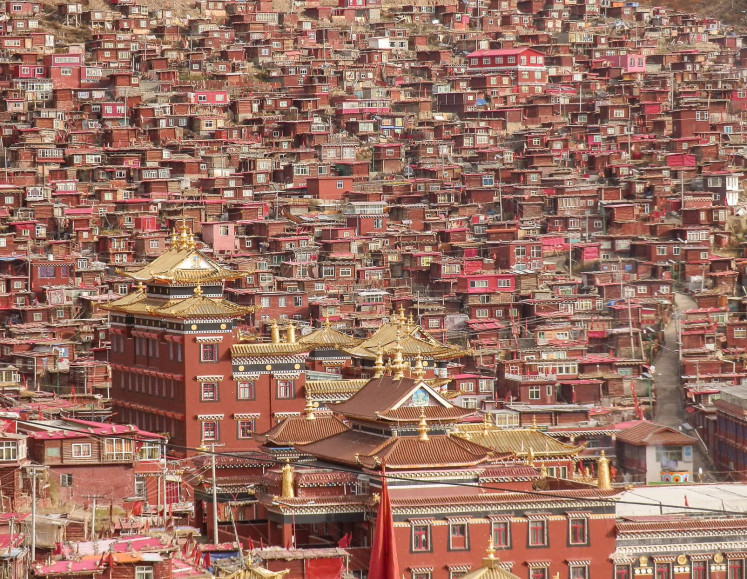Popular Reads
Top Results
Can't find what you're looking for?
View all search resultsPopular Reads
Top Results
Can't find what you're looking for?
View all search resultsShivaji Das discovers humanity behind mysticism
In an age of lockdowns and quarantines, traveling sounds like a relic from a distant past, a forbidden fruit hidden behind an impenetrable wall of red tape.
Change text size
Gift Premium Articles
to Anyone
W
hile that sense of wanderlust cannot be truly substituted, a good travel book can always help sate that longing for adventure, especially in destinations always shrouded in mysticism.
Author Shivaji Das certainly agrees, as his latest book, The ‘Other’ Shangri-La – praised by Pulitzer-winning author Ian Johnson as “an ode to the beautiful alpine region between Sichuan and Tibet and its people, with the author’s empathy and humanity making him a most excellent companion” – can attest to.
The name Shangri-La is synonymous with a utopian paradise hidden from the outside world. As it is a fictional location from the 1933 novel Lost Horizon, Shangri-La is often used as a metaphor for something elusive, sought after by many in what is a lifelong quest.
But judging by the book’s title, Shangri-La seems to exist in real life.
Discounting the luxury hotel chain, Shangri-La is often thought to be located in Tibet, as some scholars believe the original novel is influenced by the mythical kingdom Shambhala from Tibetan Buddhism.
Shivaji’s journey took him and his wife to the China-Tibet border in Sichuan province, where they discovered what he said was “one of the most beautiful nature” he has ever seen, along with its unique cultures and characters.
Behind the mystics: 'The ‘Other’ Shangri-La' by Shivaji Das is an account of his and his wife's travels in the Shangri-La region in the Sino-Tibet border. (Courtesy of Shivaji Das/Konark Publishers)Holding a day job at a business consulting firm, the Singapore-based Shivaji confided to The Jakarta Post that he is was traveler first and foremost, and then a writer.
“I don’t pre-plan that I will be writing about a certain place before I go there. I will find something very interesting and unique that I think the rest of the world should know about – that’s what makes me pick up the laptop and start,” he said.
During the journey, the couple found many interesting bits of culture, from the highest monastery in the world to the sky burial custom and to a town that holds an annual beauty contest that also doubles as a matchmaking occasion.
Shivaji said scenes of nature were, of course, interesting to look at and appreciate, but eventually, culture and interaction with people were what drew him in.
“Most of the time, they are friendly interactions, funny interactions, because that’s the nature of travel – but there are occasionally experiences that are not really the most pleasant, but that’s part of life, humanity, and what we’re made of.
“All of these things interest me a lot more, and these interactions with people are the ones which leave the deepest mark in me. After traveling to a place, I might be very happy with the nature and might remember it for a couple of days, but eventually what stays behind is the memory of these interactions.”
A few of these encounters he included in the book, like staying in a tent with a family of nomads in a highland 4,000 to 5,000 meters above sea level, as well as meeting monks at a monastery and getting to know their spiritual reasons and worldly concerns.
Preening: The Danba Beauty Valley hosts an annual beauty contest, drawing numerous onlookers – and potential suitors. (Courtesy of Shivaji Das/Konark Publishers)However, Shivaji said the most memorable encounter during the trip was actually an ordinary interaction at the Beauty Valley in Danba, known for its annual beauty contest and concentration of beautiful women.
At the same time, the surrounding area is also known for its handsome men and eligible bachelors. As it happens, this unique predicament tends to invite quite the number of love affairs.
“Somehow, we got caught into one of these love affairs, and we saw it unfold right in front of our eyes as we were having a totally different purpose of seeing the village, but in front of us this love triangle was taking shape,” he said.
It’s one thing watching an affair take place, but certainly another thing when one of the main characters is your driver, who picks up flings as easily as he does passengers.
But perhaps most surprising was the driver’s vulnerability, asking Shivaji and his wife to pray for him at the temple, as he knew he has sinned by being dishonest and unfaithful, hence his unwillingness to pray at the temple himself.
“Those kind of vulnerabilities from such a strong, macho man was something that left a big impression in me.”
Hub for the holy: The Larung Gar Monastery is the world's largest monastery, home to thousands of monks and nuns, as well as the largest slum in the region. (Courtesy of Shivaji Das/Konark Publishers)Though Shangri-La is synonymous with spirituality, Shivaji does not consider himself particularly spiritually oriented, which he says explains his own lack of religion. Instead, he considers himself very materialistic, in the sense that he is very much interested in factors affecting people’s lives.
As it happens, religion and spirituality occupy a considerable part in the lives of people in the region, and the idea of Shangri-La is also rooted in the idea of the perfect utopia, where people live long lives and have let go of their worldly desires.
“But when you go out, you find that even in the Shangri-La life is very real and material, and people have to deal with issues like inequality, discrimination and their own ambitions, whether they are a monk, a farmer or a nomad.”
Balancing his own worldview and those of the culture he visited is both a challenge and opportunity for Shivaji – being too deep in one way of thinking might close your mind to other perspectives.
Instead, he considers all of these beliefs on equal ground, which makes it easier to understand, mingle and appreciate all of these aspects. At the same time, he also tries to be careful not to denigrate these beliefs.
“All said and done, this religiosity or spirituality is one of the significant constructs of mankind – we build whole civilizations, myths, fantasies along with these,” he explained.
Shivaji Das (Courtesy of Shivaji Das/Konark Publishers)For those itching to explore, Shivaji said, one thing he always implored to his students attending his writing workshops is that stories were everywhere.
There is no need for a plane ticket to some far-off destination, just a sense of curiosity and a unique approach to things, along with a bit of language skill and overcoming your own shyness.
Though an avid traveler now, Shivaji admitted that, as a child, he hated traveling and travelers, becoming annoyed whenever one of those travelers visited his house in Assam, India.
The chance to travel came when he worked in the United States, where he was stationed in the town of Columbus, Ohio. Many of his colleagues were based in New York or Boston, often commuting back-and-forth, while he himself stayed there for more than six months.
Passing the time on weekends, Shivaji would often take public transport and hang out in the parks. He noticed that, while those taking public transport – especially in the Midwest – tended to be from the lower-income categories, they were also very friendly and would share food or deep, personal stories, like losing a child in Iraq or on the journey crossing the border from Mexico.
“That I found very fascinating – these stories as well as these small gestures of kindness coming from strangers,” he recalled. “That really taught me to travel, and that’s how I really got into it and at a late stage in my life – in my late 20s – I thought ‘this is the passion I’m going to follow’.” (ste)















